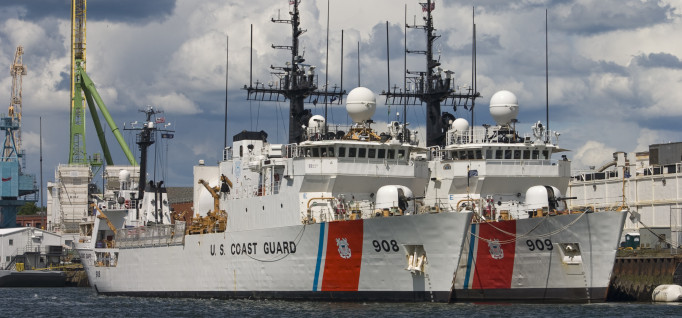Expanding a Degree Program With Industry Support
By Emily Rogan
February 26, 2015
A college in Houston has successfully built a maritime program, with the help of local industry. Now, a new state-of-the-art facility aims to take the program to the next level.
In response to a growing need for skilled employees in a burgeoning industry, San Jacinto Community College, in Houston, Texas, is building a 45,000-square-foot, high-tech maritime technology and training center and expanding its educational program. With classes expected to start in 2016, the new facility is the result of a productive partnership forged between the college, industry leaders and the Port of Houston.
“The maritime industry is a sleeping giant,” says Sarah Janes, vice president for continuing and professional development at the college. The Port of Houston runs through the area, with school districts on both sides of the turning basin. “There’s a whole economy here, and it provides 1 million jobs.”
The total cost of the new facility is $26 million, $18 million of which comes from a bond approved by members of the school’s tax district; the balance is from pre-established college funds.
Meeting industry’s need
An aging workforce — most of the maritime workers are over age 50 — and the expansion of the Panama Canal prompted commissioners of the Port of Houston to approach the college to form an advisory committee in 2008. Classes began in May of 2010.
“They needed us to help train mariners for the future,” Janes explains. “We turned it around in less than a year. They saw we listened and put into place quickly what they needed.”
The first class had just eight students. Since then, the college has issued more than 3,500 U.S. Coast Guard certificates, Janes says.
To get the program up and running, San Jacinto administrators applied for a Texas workforce grant to buy simulators, partnered with a Virginia academy that had an established maritime program and received the go-ahead from the Coast Guard, which had to approve all instructors, coursework and facilities.
In 2013, San Jacinto began to offer an Associate of Applied Science in Maritime Transportation degree. The first cohort had 13 students. The next fall, that number doubled. And the success rate speaks volumes; of the first cohort, 11 of 13 students are on schedule for completion this year.
A win-win situation
The benefits to local industry are numerous. “It’s a win-win,” Janes says. “We can train mariners for upskilling and [the industry is] getting higher-quality and trained employees. They don’t have to send employees out of Houston to be trained. We’re saving them a lot of money by training them here.”
Industry leaders agree. Houston Pilots has purchased a three-bridge simulator to be used in training; it will be moved to the new facility when it’s finished. The cost: $1.5 million.
The program is beneficial to students, too. Depending on needs and goals, the program offers several options: Students who complete an associate degree can enter the workforce, or they can transfer to Texas A&M University Galveston for a maritime-management program.
News of the program has even trickled down to the five local high schools, whose students can earn concurrent associate degrees by attending evening classes.
A mutually beneficial relationship
For college administrators looking to expand their programs, Janes’ advice is clear: “Community colleges need to do a needs assessment and check with their industry and bring industry into the conversation. Our new center is based on industry input during the planning. Listen to your industry and keep them involved.”
“When I took this job in 2009, I didn’t know anything about maritime. But you just have to … get to know [the industry]. The more you show interest in them, they will show interest in you,” Janes says.
Has your college recently expanded a degree program? Share your experience in the Comments.








